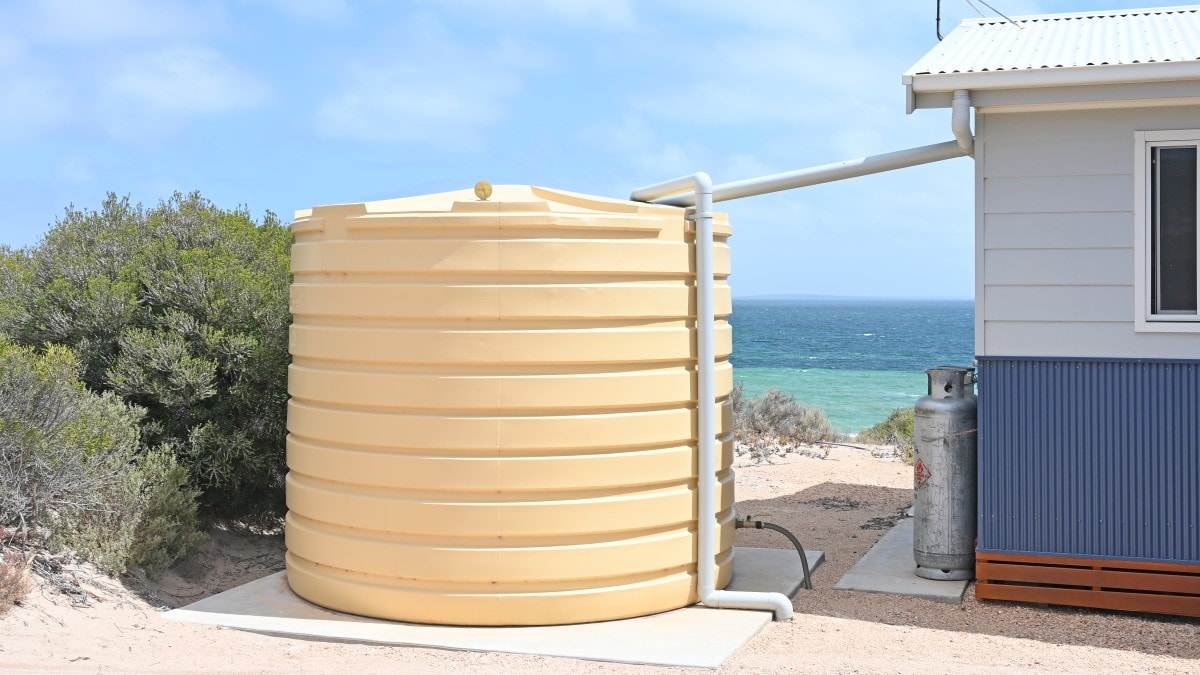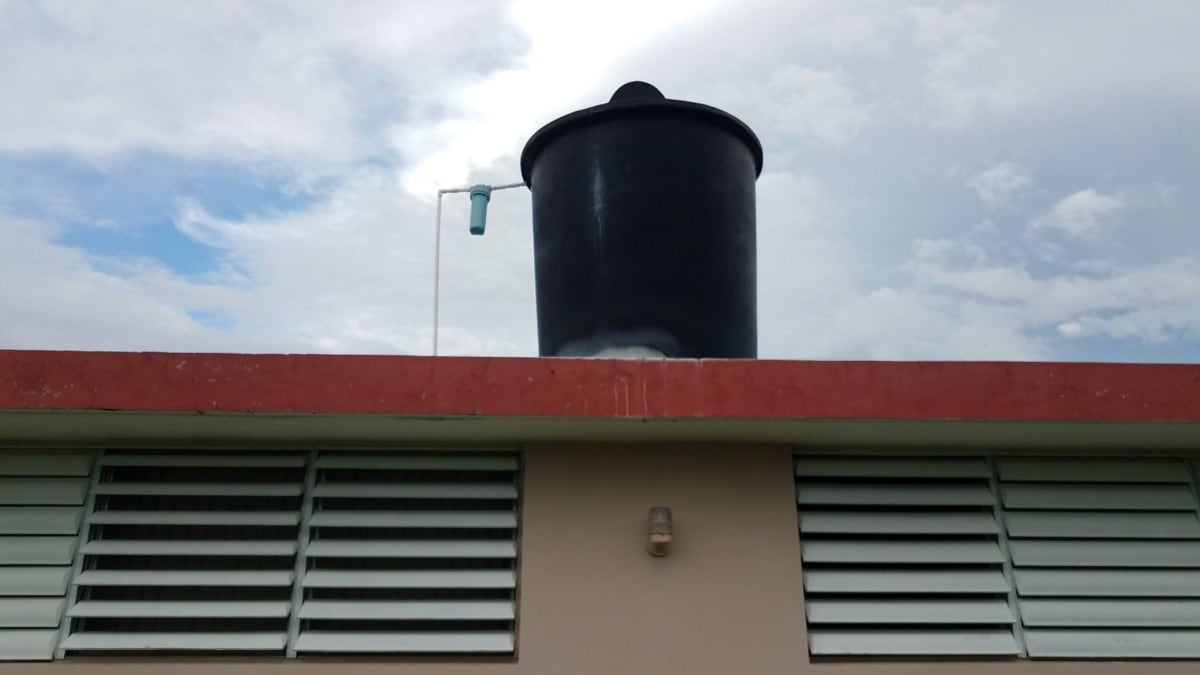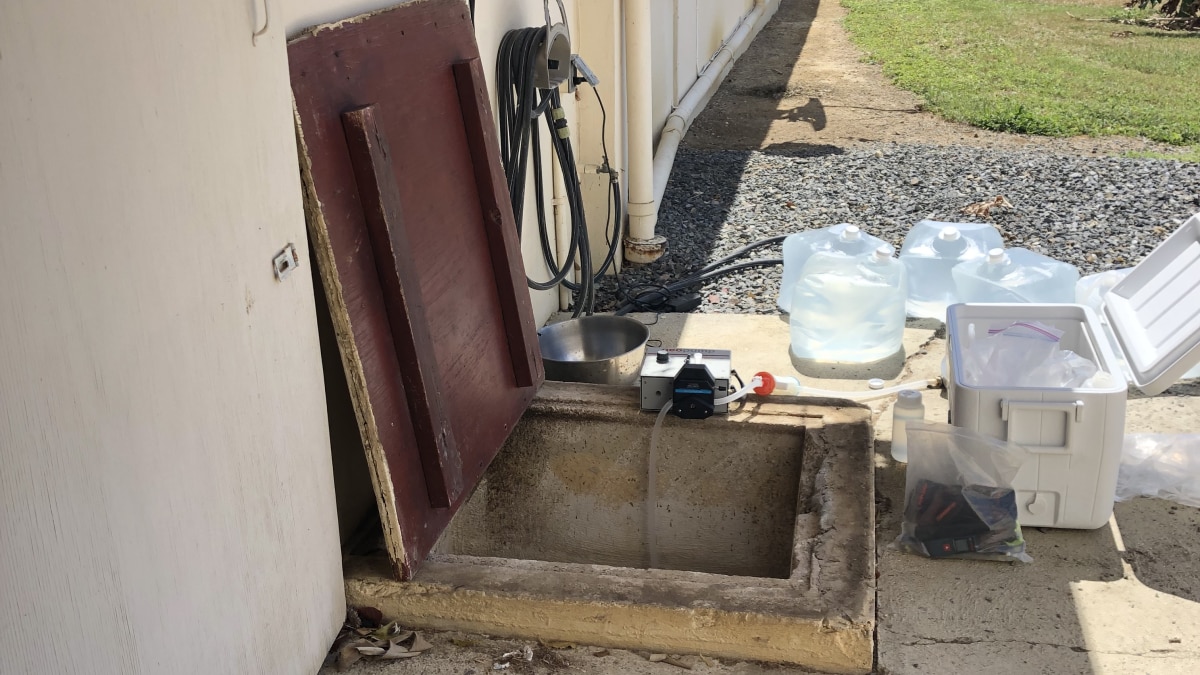Key points
- Natural disasters—like floods or hurricanes—can wash germs or chemicals into cisterns and make water unsafe to drink.
- Before a disaster, fill your cistern, close it off from storm water, and store an emergency water supply.
- After a disaster, you may need to clean or disinfect your cistern before using it again.

Overview
Cisterns are large containers used to store drinking water. They can store:
- Treated water that comes from a public water system
- Untreated water from a catchment (collection) system
Catchment systems collect rain, ground water, spring water, or surface water.
Your cistern may be on your roof, under the ground, or beside your home. Cisterns on rooftops are often connected to public water systems or to groundwater systems. Underground water cisterns often use catchment systems. Standalone cisterns beside homes can be filled by public water or catchment systems.


How to prepare
If possible, take the following steps before a natural disaster to protect your water.
Fill your cistern to the maximum capacity. The additional water can increase the amount you have available after a disaster. If your cistern is on the roof, the extra water can also help weigh down the cistern during strong winds.
To prevent water from entering the cistern during the disaster:
- Close off the water source, or
- Divert the catchment system away from the cistern
Have an emergency supply of safe water ready to use in addition to the water in your cistern. Have at least 1 gallon of water per person per day for 3 days. If possible, have a 2-week supply of water.
Have a bottle of unscented liquid household chlorine bleach. The bleach label should say it contains between 5% and 9% sodium hypochlorite. You can use this bleach to treat your water, if needed, and for general cleaning and disinfecting.
What to do afterward
Water with fuel or toxic chemicals in it
After a natural disaster, use only clean, treated water for:
- Drinking
- Cooking
- Making ice
- Washing dishes
- Showering or bathing
- Brushing teeth
- Cleaning
You can use water contaminated with germs or chemicals to flush toilets.
Treated, public system water
If your cistern stores treated water from a public system and was not affected by the disaster, you can use the water.
If you cannot access your cistern water or the water was affected by the disaster, use your stored emergency water supply. If needed, treat that water in small amounts (a gallon or less at a time) to make it safe to use.
If you do not have an emergency water supply, find other safe water sources.
Disinfecting your cistern
You may need to disinfect a cistern that stores treated public water after a disaster. Consider disinfecting your cistern if:
- Water system or government officials tell you to disinfect your cistern
- You evacuated your home
- You have been away for weeks or months and think your cistern may have gotten contaminated
How to disinfect your cistern:
1. If the cistern is connected to any water treatment units, close valves to those units. Follow the manufacturer's recommendations to disinfect the treatment system.
2. Add 3 cups (a little less than 1 liter) of bleach for every 100 gallons (about 380 liters) of water in the cistern. Use unscented liquid household bleach with 5%–9% sodium hypochlorite.
| Cistern size | Tank is 1/4 full | Tank is 1/2 full | Tank is 3/4 full | Full tank |
|---|---|---|---|---|
| 200 gallons | 1.5 cups | 3 cups | 4.5 cups | 6 cups |
| 450 gallons | 3.5 cups | 7 cups | 10.5 cups | 14 cups |
| 600 gallons | 4.5 cups | 9 cups | 13.5 cups | 18 cups |
| 1,000 gallons | 7.5 cups | 15 cups | 22.5 cups | 30 cups |
3. If the cistern is connected to indoor plumbing, open each faucet and run the water until you smell chlorine (bleach).
4. Turn off all faucets and allow the solution to stay in the cistern and plumbing for at least 12 hours.
5. Drain all water from the cistern into a sanitary sewer.
6. Refill the cistern with clean, safe water.
7. Open each faucet and run the water until you do not smell chlorine (bleach).
Untreated catchment water
If your cistern stores untreated water and has open connections (like gutters or overflows), it may fill with storm debris or floodwater during a disaster. If this is the case, avoid using the water in your cistern. Ask your health department what steps they recommend taking before using water from your cistern again.
Disinfecting the water in cisterns filled with storm debris or floodwaters does not work well. It is very difficult to determine the exact amount of chlorine you need to kill germs and mix it in correctly. In addition, water in these cisterns might get re-contaminated by germs in the environment because of their open connections.
Instead of using the water in your cistern, use your stored emergency water supply. If needed, treat that water in small amounts (a gallon or less at a time) to make it safe to use.
If you do not have an emergency water supply, find other safe water sources.
Cleaning your cistern
If your cistern uses untreated water and has open connections, ask your health department if you need to drain and clean your cistern after a disaster. If they recommend you do, follow these steps:
- Remove all debris from the catchment area.
- Remove all debris and water from the cistern.
- If you can do it safely, scrub the inside of the cistern with a stiff brush and a solution of 1 cup (about 0.25 liter) of bleach mixed with 10 gallons (about 38 liters) of water. Use unscented liquid household bleach with 5%–9% sodium hypochlorite.
- Rinse the cistern with clean water, then drain.
- Refill the cistern with clean, safe water.

